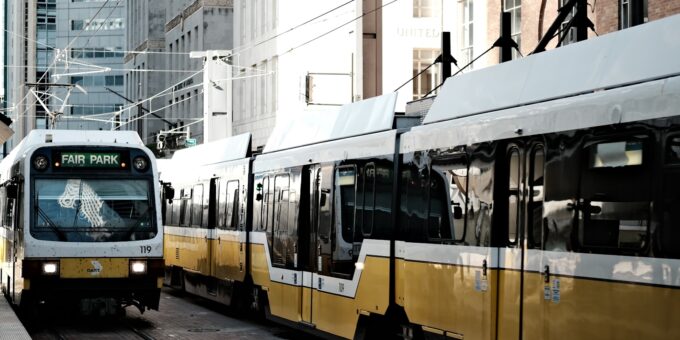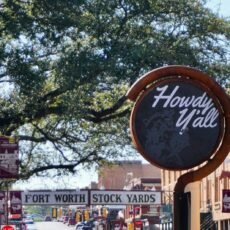
Dallas, Texas, a city known for its sprawling urban landscape and vibrant cultural scene, is also home to a complex and evolving transportation network. While many locals and visitors rely on well-known options like the DART (Dallas Area Rapid Transit) system and major highways, many lesser-known aspects of Dallas transportation can significantly enhance your travel experience. Whether you’re a daily commuter or a first-time visitor, this expert-level analysis offers rare insights and off-the-beaten-path ideas to help you navigate Dallas with ease and efficiency.
The Evolution of Dallas Transportation
Dallas has come a long way in developing its transportation infrastructure. Originally designed as a car-centric city, Dallas has seen a shift towards more diverse transportation options in recent years. The expansion of public transit, the introduction of bike-sharing programs, and the rise of ride-sharing services have all contributed to a more dynamic and accessible system.
Despite these advancements, many people still default to driving as their primary mode of transportation. While driving offers convenience, it often comes with the challenges of traffic congestion and parking difficulties, especially in the downtown area. Understanding the full range of transportation options available in Dallas can open up new possibilities for faster, more efficient, and less stressful travel.
Rare Insights into Public Transit: Beyond the Basics
The DART system is the backbone of public transportation in Dallas, covering 13 cities in the Dallas-Fort Worth metroplex with its network of buses, light rail, and commuter trains. However, several lesser-known aspects of the DART system can offer strategic advantages to savvy commuters.
One such insight is the effectiveness of the Trinity Railway Express (TRE), a commuter rail service that connects Dallas and Fort Worth. While many people are familiar with the light rail lines, the TRE is often overlooked as a viable option for traveling between the two cities. For those who work in one city and live in the other, the TRE can be a game-changer, offering a stress-free alternative to congested highways.
Another underappreciated aspect of the DART system is the network of park-and-ride facilities. These lots, strategically located across the metroplex, allow commuters to park their cars for free and take public transit into the city. This option can save time and money, especially when considering the high cost of parking in downtown Dallas. Moreover, by using the park-and-ride system, commuters can avoid the frustration of navigating city traffic during peak hours.
Off-the-Beaten-Path Ideas: Exploring Dallas on Two Wheels
While Dallas might not be the first city that comes to mind when thinking about cycling, the city’s bike infrastructure has improved significantly in recent years. The introduction of bike lanes, trails, and bike-sharing programs has made cycling a viable option for short trips and daily commutes.
The Katy Trail, a 3.5-mile-long urban trail that runs through the heart of Dallas, is one of the city’s hidden gems for cyclists and pedestrians alike. This trail offers a scenic route for commuting or leisurely rides, connecting several key neighborhoods, including Uptown, Victory Park, and the American Airlines Center. The trail is well-maintained, with dedicated lanes for both cyclists and walkers, making it a safe and enjoyable option for those looking to explore the city on two wheels.
For those who prefer a more structured bike-sharing program, Dallas offers several options, including Lime and BCycle. These services allow users to rent bikes for short periods, with multiple docking stations located throughout the city. Bike-sharing can be an excellent way to navigate downtown Dallas, especially during events or when parking is scarce.
In addition to the Katy Trail, Dallas boasts a network of other trails and bike lanes that are less well known but equally valuable. The White Rock Lake Trail, for instance, offers an 11-mile loop around one of Dallas’ most beautiful natural landmarks, providing a peaceful and scenic route away from the hustle and bustle of city life. For commuters living near White Rock Lake, this trail can serve as a serene alternative to driving.
Expert-Level Tips for Navigating Dallas by Car
For those who prefer driving, Dallas presents a unique set of challenges and opportunities. Traffic congestion is a well-known issue, particularly during rush hours, but some strategies can help drivers navigate the city more effectively.
One of the most valuable tips is to familiarize yourself with Dallas’ toll roads. While many drivers avoid toll roads due to the cost, they can be a time-saving option, especially during peak traffic periods. The Dallas North Tollway and the President George Bush Turnpike are two major toll roads that can help drivers bypass congested areas and reach their destinations more quickly. For frequent commuters, investing in a TollTag can make these roads more affordable and convenient.
Another driving strategy involves timing your travel to avoid peak congestion. Dallas traffic tends to peak between 7:00 AM and 9:00 AM and again from 4:30 PM to 6:30 PM. If possible, adjusting your schedule to travel outside these hours can result in a much smoother and faster commute. Additionally, using traffic apps like Waze or Google Maps can provide real-time updates on traffic conditions, allowing you to choose the most efficient route.
For those visiting downtown Dallas, parking can be a significant concern. However, there are a few off-the-beaten-path parking options that can save time and money. For example, the Dallas Farmers Market offers affordable parking and is within walking distance of several downtown attractions. Additionally, many hotels and businesses in the area offer validated parking for customers, which can be a cost-effective solution for those looking to explore the city without breaking the bank.
Beyond Conventional Wisdom: Embracing Ride-Sharing and Public Transit Hybrids
Ride-sharing services like Uber and Lyft have become ubiquitous in Dallas, offering a convenient and flexible option for getting around the city. However, these services can be expensive, particularly during peak hours or when surge pricing is in effect. To maximize the benefits of ride-sharing while minimizing costs, consider using ride-sharing in conjunction with public transit.
For example, taking the DART to a central location and then using a ride-sharing service for the last leg of your journey can be a cost-effective and time-saving strategy. This hybrid approach allows you to avoid the most congested parts of your commute while still enjoying the convenience of door-to-door service.
Another innovative approach is to use ride-sharing services to reach park-and-ride facilities. This can be particularly useful for those who live in areas with limited public transit options. By combining ride-sharing with public transit, you can create a more efficient and sustainable travel plan that reduces both your carbon footprint and your transportation costs.
Conclusion
Navigating Dallas’ transportation system doesn’t have to be a daunting task. By exploring these expert-level insights and off-the-beaten-path ideas, you can discover new ways to get around the city that are both efficient and enjoyable. Whether you’re taking advantage of the DART system, cycling through scenic trails, or optimizing your driving routes, there’s a wealth of options available to help you make the most of your time in Dallas. Embrace these strategies, and you’ll find that getting around the city can be a breeze, no matter what challenges come your way.
















